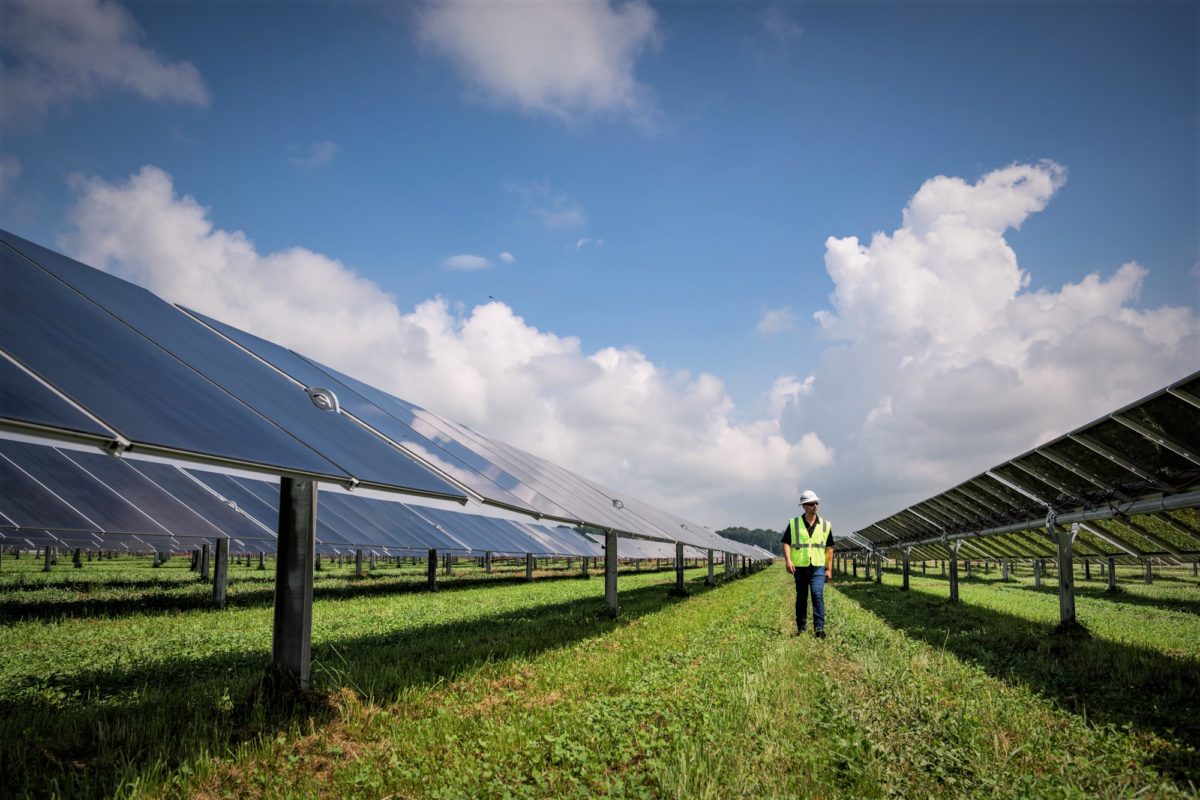Tracker manufacturer, Nextracker, announced a new manufacturing line dedicated to producing steel tracker components for use in utility-scale solar power plants at Atkore’ Phoenix, Arizona facility, which has been expanded and reconfigured with new capacity dedicated to Nextracker products.
According to Nextracker, the move was made in part to ensure that the company has a dedicated supply of critical materials in the strategic solar market of the Southwestern United States and is well-positioned to support key customers in the region, with the company highlighting Arizona utility, Arizona Public Service (APS), as one such key customer.
“Building out our manufacturing capacity with partners across the US allows us to protect customers from cost volatility, steel supply risk and delays in logistics,” said Dan Shugar, founder and CEO of Nextracker. “Partnering with Atkore in Phoenix provides product in the epicenter of the Southwest’s rapidly growing region from a population and power perspective and ensures that best in class product is available to enable that demand to be served with clean, affordable solar power.”
Nextracker already has plans for the first components created in the Atkore facility. According to the company, newly-manufactured components will be used in the construction of APS’ 150 MW Agave solar project. That project will be Arizona to its core, featuring First Solar modules and being constructed by Arizona-based McCarthy Building Companies.
Securing steel
Today’s announcement marks the second steel manufacturer to add a dedicated Nextracker production line in as many months. In April, Nextracker and JM Steel, a division of JENNMAR USA, announced a partnership under which a dedicated solar tracker production line was built on the campus of a new Steel Dynamics manufacturing facility near Corpus Christi, Texas.
The Steel Dynamics facility utilizes electric arc furnaces in its manufacturing, which have been described as a “next-generation” process for steel fabrication, one which can lead to electric arc furnace facilities being up to 75% less carbon-intensive than traditional blast furnaces. As for the new Atkore manufacturing line, it has not yet been shared whether or not the company will look to institute low-carbon fabrication practices.
Securing steel fabrication to alleviate supply chain concerns and shipping volatility is an emerging trend in the tracker and racking space, one that could hold momentum if the aforementioned market concerns persist. Another prominent name in the space, Terrasmart fabricates its own steel structures in house. In a prior interview with pv magazine, Terrasmart President, Ed McKiernan said that such an approach allows his company to switch up their operations “on a dime,” and to accommodate design and timeline changes for customers.
One issue that Terrasmart has run into, however, is sourcing the steel to enable this process, as steel supply markets have had historically high demand, and can be difficult to navigate as a somewhat-newer entrant. In partnering with an existing name in the industry, Nextracker should be able to forgo some of these sourcing concerns, while still keeping overall costs down and product innovation flexible.
This content is protected by copyright and may not be reused. If you want to cooperate with us and would like to reuse some of our content, please contact: editors@pv-magazine.com.









By submitting this form you agree to pv magazine using your data for the purposes of publishing your comment.
Your personal data will only be disclosed or otherwise transmitted to third parties for the purposes of spam filtering or if this is necessary for technical maintenance of the website. Any other transfer to third parties will not take place unless this is justified on the basis of applicable data protection regulations or if pv magazine is legally obliged to do so.
You may revoke this consent at any time with effect for the future, in which case your personal data will be deleted immediately. Otherwise, your data will be deleted if pv magazine has processed your request or the purpose of data storage is fulfilled.
Further information on data privacy can be found in our Data Protection Policy.